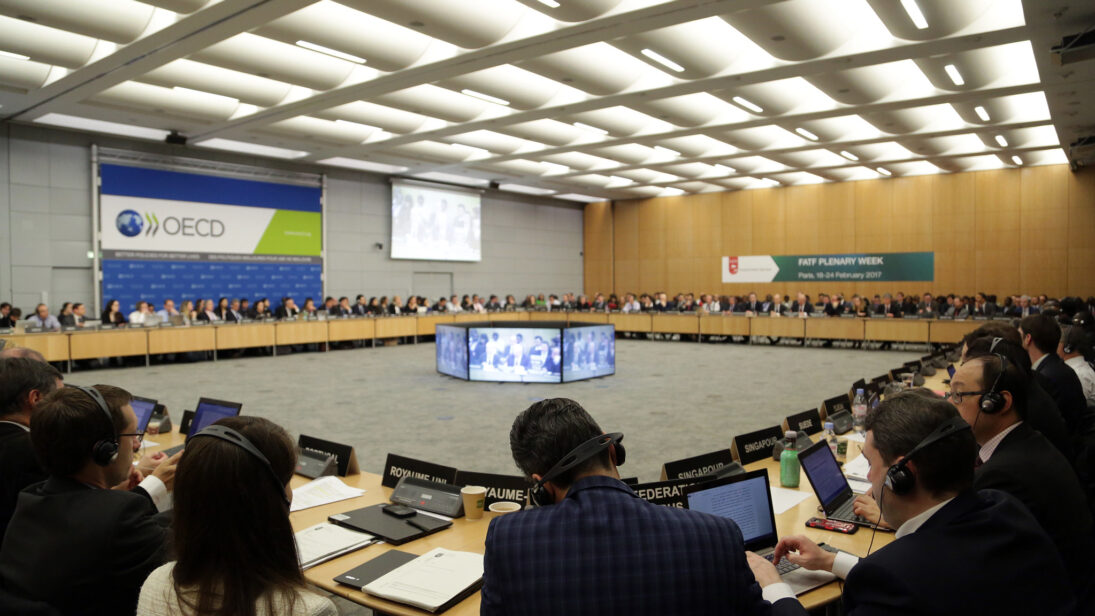
On June 17, 2022, the Financial Action Task Force (FATF), an international financial watchdog working to combat money laundering and terrorism financing, announced that Pakistan has substantially completed two of its action plans covering 34 items. While agreed in principle, the final decision to withdraw Pakistan from the gray list will be taken after an on-site visit to verify that the anti-money laundering and combating finance terror (AML/CFT) reforms have been implemented and are being sustained. Pakistan has come a long way in complying with FATF’s conditions and it seems that Pakistan may be a step away from coming off the FATF gray list.
Pakistan has been on FATF gray list three times: 2008-10, 2012-15, and 2018-22. During these years, FATF assigned Pakistan an action plan to prioritize the criminalization of money laundering and terrorist financing, putting financial sanctions, and taking stringent measures such as identification, freezing, and confiscating terrorist assets.
Countries considered to have a high risk of money laundering or terrorism financing by FATF, but have committed to work closely with the watchdog, are put under the gray list. Being on the FATF gray list significantly reduces a country’s potential to attract foreign direct investment, capital inflows, and international borrowing from organizations like World Bank, IMF, and Asian Development bank. It also negatively impacts its exports and remittances. According to a study by Tabadlab, being on the FATF gray list has cost Pakistan approximately $38 billion since 2018.
Pakistan has been on FATF’s gray list since 2018, after which it was asked to work on a 27-points action plan to curb terror financing. In 2021, even though Pakistan was able to address its 2021 action plan ahead of its time, FATF decided to keep it on its gray list. Since then, Pakistan has passed numerous laws, increased money laundering and terror financing investigations, and has prosecuted senior members of the UN-designated terrorist groups, including Lashkar-e-Taiba (LeT) chief Hafiz Saeed.
The day FATF’s decision was to be announced, Pakistan Stock Exchange (PSX) closed at 410.60 points up, indicating investors’ confidence and expectations that the country would soon be removed from the FATF’s gray list. The decision comes as Pakistan is going through a severe economic crisis with high debt and double-digit inflation. The electricity and gas prices have increased three times, and oil prices have doubled within a year. The IMF-induced austerity measures to tackle the current account deficit have further reduced the purchasing power of the masses.
If Pakistan shows the same zeal and political will to curb money laundering and countering terrorism in the future, it may successfully break the recurring cycle of being on FATF’s gray list.
Considering the AML/CFT measures that Pakistan has taken over the years, it seems the country is approaching coming off the FATF’s gray list very soon. If Pakistan shows the same zeal and political will to curb money laundering and countering terrorism in the future, it may successfully break the recurring cycle of being on FATF’s gray list.
At a time when Pakistan’s economy is already going through a hard time with slowed economic growth, increased inflation, and a rising current account deficit, coming out of the FATF gray list would help improve the economic situation, expand international trade, and regain investor confidence that recent economic and political instability has shaken. While coming off the gray list may help in improving Pakistan’s image internationally, it still needs to take substantial measures in order to attract foreign direct investment (FDI). Sustained political stability, low inflation, controlling power outages, ensuring energy supply to firms, introducing investor-friendly policies, and boosting the manufacturing sector can help Pakistan in attract FDI in the future. Pakistan needs to introduce structural reforms and establish a strong manufacturing base in order to boast its exports and stop relying heavily on foreign aid and IMF bailouts. For the time being, coming out of FATF’s gray list will give Pakistan’s economy some breathing space that it desperately needs and make it more financially integrated into the global financial markets.
***
Click here to read this article in Urdu.
Image 1: Michel Sapin via Flickr


